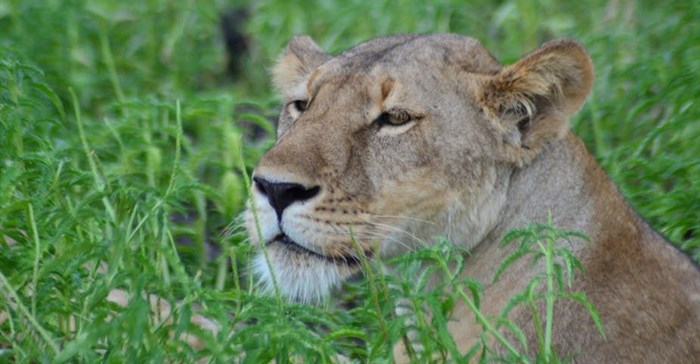
Most lion bones in South Africa come from captive-bred lions. Author supplied
The categorisation masks important realities. The only growing populations are those in fenced reserves with small wild managed populations. This is not only a species crisis, it’s also an ecological and economic crisis. Lions are apex predators, which means that entire food chains and ecological systems depend on healthy populations. Lions are also a significant tourism drawcard, and tourism is a significant employer.
South Africa, uniquely, also allows the breeding of lions in captivity, most of which have no conservation value. It has an estimated 7000 to 8000 lions in captivity across roughly 300 facilities. These lions are predominantly bred for canned hunting and the Asian predator bone market.
But, following a global campaign, the demand for canned hunting has plummeted in the last few years. Environmental lobby groups argue that lions are now increasingly being killed for the bone trade.
A report prepared by by EMS, an activist charity, and the lobby group Ban Animal Trading, shows that lion bones are sold on the black market as tiger bones. The bones are dropped into rice wine vats and sold as tiger bone wine which is promoted in Asian markets as a treatment for rheumatism and impotence. The bones are also used to produce tiger bone cakes, an exotic small bar of melted bones mixed with additives like turtle shell.
The report argues that most lion bones come from captive-bred lions in South Africa.
Captive breeding is perfectly legal, if distasteful. But there are limits on the trade of lion bones. In 2016 the 17th CITES Conference of the Parties decided that no bone exports should be allowed from wild lions. But the conference also agreed that South Africa should establish a quota for skeleton exports from captive-bred lions. Captive breeding only occurs at scale in South Africa, so no other country is permitted to export lion bones.
A year later the Department of Environmental Affairs set an annual lion skeleton export quota at 800. It raised this to 1500 in July 2018. It did so without public consultation or the support of research. Even an interim report prepared for the department by the South African National Biodiversity Institute did not specify grounds on which to establish, or expand, a quota.
On top of this, there’s poor regulation of lion breeding facilities. The department doesn’t have a working database so doesn’t know how many facilities there are, or what the total number of captive-bred predators is.
How it works
In my new report, I discuss how breeding facilities are linked to the trade in lion bones.
The facilities arrange hunts that cost in the region of $22,000 for a male and female combination. Wildlife researcher Karl Amman describes how trophy taxidermists then sell the lion skeletons (without the skull) on to buyers. These are usually in Asian countries. A skeleton can fetch $1500.
The importer then sells the bones on for between $700 and $800 per kg. A 100kg lion yields about 18kgs of bone, worth roughly $15,000 at this point in the supply chain. The bones are then imported into Vietnam, boiled down in large pots to yield 100g bars of cake which are sold for roughly $1000.
Conservationists are concerned that South Africa’s quota provides an incentive to breed lions not only for the bullet, but also for the bone trade.
The 2017 quota was fully subscribed within weeks while a newly released report prepared for CITES suggests that 3469 skeletons were exported that year, nearly double the allocated number.
This rise in the trade of lion bones shouldn’t come as a surprise. In 2016 the US banned the import of captive-origin lion trophies from South Africa. Breeding facilities began looking for alternative markets. Selling lion carcasses was an obvious option given that a lioness skeleton fetches roughly R30,000, and a male skeleton about R50,000, when sold to a trader.
The predator breeding industry in South Africa argues that captive lion populations serve as a buffer against wild lion poaching because it can satisfy the demand for bones.
But those who oppose the trade in lion bones cite evidence that suggests the opposite is true. If anything, the quota could fuel the demand for lion products and provide a laundering channel for illegally sourced wild lion parts. This may imperil already vulnerable wild lion populations elsewhere in Africa. It also makes law enforcement extremely challenging: officials cannot be expected to distinguish between legal and illegally sourced bone stock.
What is being done about it?
The public outcry over an apparently arbitrary quota has been notable. The backlash against canned hunting and the bone trade has been similarly vocal.
The arguments against the trade have been put on the table at a two-day colloquium in South Africa’s parliament. The question being asked is: does the captive lion breeding industry harm, or promote, South Africa’s conservation image?
Ultimately, it is parliament’s job to hold the government to account. The colloquium may go some way towards doing so. It may even end the brutality of captive predator breeding.
This article was originally published on The Conversation. Read the original article.






































